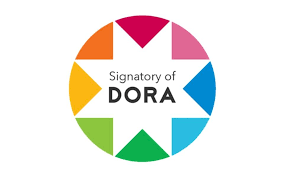Socio-environmental management and strategies for the control of invasive species in reservoirs: National and regional perspectives
DOI:
https://doi.org/10.56124/sapientiae.v7i13.0006Keywords:
Invasive species, socio-environmental management, control strategies, reservoirs in Latin America, community participationAbstract
The review study addresses issues associated with invasive species in dams or reservoirs in Latin America and Ecuador. Control strategies and public policies designed to manage and mitigate the spread of these invasive aquatic plants are examined. The study was based on a documentary review that compiled recent information on the management of socio-environmental projects for invasive species control globally, with a focus on Latin America. Trends and patterns were sought regarding control strategies used in the region, using relevant bibliographic references obtained from the "SCOPUS" and "Google Scholar" digital platforms. Search criteria included a time period of the last 5 years (2019-2023) and focused on specific study areas. The regional context of invasive species management in reservoirs is analyzed, highlighting the importance of these water bodies in Latin America, especially in Ecuador. Specific issues presented in reservoirs of the region are addressed, and strategies for controlling invasive species are explored, along with the development of policies and regulations for reservoir restoration and conservation. The participation of communities and other relevant actors is highlighted, as well as monitoring and evaluation methods for projects, including relevant socio-environmental indicators. These results offer a comprehensive view of socio-environmental management and strategies for controlling invasive species in reservoirs, with significant implications for water resource conservation in the region, and raise reflections on future scenarios in the region. The analysis provides a deeper understanding of the challenges and opportunities associated with managing invasive species in the Poza Honda reservoir as a case study and offers valuable insights for the development of effective policies and control strategies in similar contexts.
Downloads
References
Abelando, M. I. (2021). Control del agua de lastre como fuente de ingreso de especies exóticas invasoras en puertos argentinos de la Cuenca del Plata. INNOTEC, 22. https://doi.org/10.26461/22.09
Aber, A., Ferrari, G., Porcile, J. F., Rodríguez, E., & Zerbino, S. (2012). Identificación de prioridades para la gestión nacional de las especies exóticas invasoras. UNESCO.
Agencia de Regulación y Control de Energía y Recursos Naturales No Renovables. (2022). Atlas del sector eléctrico ecuatoriano.
Aguirre, W. E., Alvarez-Mieles, G., Anaguano-Yancha, F., Burgos Morán, R., Cucalón, R. V., Escobar-Camacho, D., Jácome-Negrete, I., Jiménez Prado, P., Laaz, E., Miranda-Troya, K., Navarrete-Amaya, R., Nugra Salazar, F., Revelo, W., Rivadeneira, J. F., Valdiviezo Rivera, J., & Zárate Hugo, E. (2021). Conservation threats and future prospects for the freshwater fishes of Ecuador: A hotspot of Neotropical fish diversity. In Journal of Fish Biology (Vol. 99, Issue 4, pp. 1158–1189). John Wiley and Sons Inc. https://doi.org/10.1111/jfb.14844
Ahmed, D. A., Haubrock, P. J., Cuthbert, R. N., Bang, A., Soto, I., Balzani, P., Tarkan, A. S., Macêdo, R. L., Carneiro, L., Bodey, T. W., Oficialdegui, F. J., Courtois, P., Kourantidou, M., Angulo, E., Heringer, G., Renault, D., Turbelin, A. J., Hudgins, E. J., Liu, C., … Courchamp, F. (2023). Recent advances in availability and synthesis of the economic costs of biological invasions. BioScience, 73(8), 560–574. https://doi.org/10.1093/biosci/biad060
Araujo, G. E., Lucana, R., & Ordoñez, K. M. (2019). Eficiencia del jacinto de agua (Eichhornia crassipes) para el tratamiento de las aguas residuales domésticas de la quebrada Charhuayacu en el sector Shango, Moyobamba 2019. Universidad César Vallejo.
Ayanda, O. I., Ajayi, T., & Asuwaju, F. P. (2020). Eichhornia crassipes (Mart.) Solms: Uses, Challenges, Threats, and Prospects. In Scientific World Journal (Vol. 2020). Hindawi Limited. https://doi.org/10.1155/2020/3452172
Badr, A., Li, Z., & El-Dakhakhni, W. (2023). Dam System and Reservoir Operational Safety: A Meta-Research. In Water (Switzerland) (Vol. 15, Issue 19). Multidisciplinary Digital Publishing Institute (MDPI). https://doi.org/10.3390/w15193427
Brazeiro, A. (2018). Recientes avances en investigación para la gestión y conservación del bosque nativo de Uruguay (I).
Britton, J. R., Lynch, A. J., Bardal, H., Bradbeer, S. J., Coetzee, J. A., Coughlan, N. E., Dalu, T., Tricarico, E., Gallardo, B., Lintermans, M., Lucy, F., Liu, C., Olden, J. D., Raghavan, R., & Pritchard, E. G. (2023). Preventing and controlling nonnative species invasions to bend the curve of global freshwater biodiversity loss. Environmental Reviews, 31(2), 310–326. https://doi.org/10.1139/er-2022-0103
Buchadas, A., Vaz, A. S., Honrado, J. P., Alagador, D., Bastos, R., Cabral, J. A., Santos, M., & Vicente, J. R. (2017). Dynamic models in research and management of biological invasions. In Journal of Environmental Management (Vol. 196, pp. 594–606). Academic Press. https://doi.org/10.1016/j.jenvman.2017.03.060
Celi, J. E., & Villamarín, F. (2020). Freshwater ecosystems of mainland Ecuador: Diversity, issues and perspectives. Acta Limnologica Brasiliensia, 32, 1–8. https://doi.org/10.1590/S2179-975X3220
Chukwuka, A. V., & Adeogun, A. O. (2023). Oxbow lakes in Africa: Status, threats, and management strategies- A review. In Environmental Challenges (Vol. 13). Elsevier B.V. https://doi.org/10.1016/j.envc.2023.100759
CISPDR. (2016). PLAN HIDRÁULICO REGIONAL DE DEMARCACIÓN HIDROGRÁFICA MANABÍ.
Coetzee, J. A., & Hill, M. P. (2020). Salvinia molesta D. Mitch. (Salviniaceae): Impact and control. CAB Reviews: Perspectives in Agriculture, Veterinary Science, Nutrition and Natural Resources, 15(33). https://doi.org/10.1079/PAVSNNR202015033
Cuthbert, R. N., Pattison, Z., Taylor, N. G., Verbrugge, L., Diagne, C., Ahmed, D. A., Leroy, B., Angulo, E., Briski, E., Capinha, C., Catford, J. A., Dalu, T., Essl, F., Gozlan, R. E., Haubrock, P. J., Kourantidou, M., Kramer, A. M., Renault, D., Wasserman, R. J., & Courchamp, F. (2021). Global economic costs of aquatic invasive alien species. Science of the Total Environment, 775. https://doi.org/10.1016/j.scitotenv.2021.145238
de Sousa Lopes, M., & Brito, D. M. C. (2021). Socioenvironmental impacts of dams in the Jari Valley, Amapá, Brazil: community perceptions. Ambiente e Sociedade, 24. https://doi.org/10.1590/1809-4422asoc20190068r3vu2021L2AO
Dechassa, N., & Abate, B. (2020). Current Status of Water Hyacinth (Eichhornia crassipes) in Ethiopia: Achievements, Challenges and Prospects: A Review. Journal of Environment and Earth Science. https://doi.org/10.7176/jees/10-12-03
Dissanayaka, D. M. N. S., Udumann, S. S., Dissanayake, D. K. R. P. L., Nuwarapaksha, T. D., & Atapattu, A. J. (2023). Review on Aquatic Weeds as Potential Source for Compost Production to Meet Sustainable Plant Nutrient Management Needs. Waste, 1(1), 264–280. https://doi.org/10.3390/waste1010017
Edgerton, E., Wang, H. H., Grant, W. E., & Masser, M. (2022). Aquatic Plant Invasion and Management in Riverine Reservoirs: Proactive Management via a Priori Simulation of Management Alternatives. Diversity, 14(12). https://doi.org/10.3390/d14121113
Escamilla-García, P. E., Fernández-Rodríguez, E., Jiménez-Castañeda, M. E., Jiménez-González, C. O., & Morales-Castro, J. A. (2023). A Review of the Progress and Potential of Energy Generation from Renewable Sources in Latin America. Latin American Research Review, 16(12), 1–20. https://doi.org/10.1017/lar.2023.15
Estrada Fernández, A. (2023). Análisis de la vegetación en orillas restauradas del río Nalón con especial interés en especies exóticas invasoras.
Gallardo, B., Clavero, M., Sánchez, M. I., & Vilà, M. (2016). Global ecological impacts of invasive species in aquatic ecosystems. In Global Change Biology (Vol. 22, Issue 1, pp. 151–163). Blackwell Publishing Ltd. https://doi.org/10.1111/gcb.13004
García-Díaz, P., Cassey, P., Norbury, G., Lambin, X., Montti, L., Pizarro, J. C., Powell, P. A., Burslem, D. F. R. P., Cava, M., Damasceno, G., Fasola, L., Fidelis, A., Huerta, M. F., Langdon, B., Linardaki, E., Moyano, J., Núñez, M. A., Pauchard, A., Phimister, E., … Tomasevic, J. A. (2021). Management Policies for Invasive Alien Species: Addressing the Impacts Rather than the Species. BioScience, 71(2), 174–185. https://doi.org/10.1093/biosci/biaa139
García-Díaz, P., Montti, L., Powell, P. A., Phimister, E., Pizarro, J. C., Fasola, L., Langdon, B., Pauchard, A., Raffo, E., Bastías, J., Damasceno, G., Fidelis, A., Huerta, M. F., Linardaki, E., Moyano, J., Núñez, M. A., Ortiz, M. I., Rodríguez-Jorquera, I., Roesler, I., … Lambin, X. (2022). Identifying Priorities, Targets, and Actions for the Long-term Social and Ecological Management of Invasive Non-Native Species. Environmental Management, 69(1), 140–153. https://doi.org/10.1007/s00267-021-01541-3
Geist, J., & Hawkins, S. J. (2016). Habitat recovery and restoration in aquatic ecosystems: current progress and future challenges. Aquatic Conservation: Marine and Freshwater Ecosystems, 26(5), 942–962. https://doi.org/10.1002/aqc.2702
Giovanny, R., Malaver, V., Drn, T., Eduard, J., & Rojas, R. (2020). Plan de Prevención, Manejo y Control del buchón de agua (Eichhornia crassipes (Mart.) Solms) para la jurisdicción de la Corporación Autónoma Regional de Cundinamarca. Corporación AutónomaRegional de Cundinamarca CAR.
Gonzalez-Salazar, M., & Roger Poganietz, W. (2022). Making use of the complementarity of hydropower and variable renewable energy in Latin America: A probabilistic analysis. In Energy Strategy Reviews (Vol. 44). Elsevier Ltd. https://doi.org/10.1016/j.esr.2022.100972
Guevara Granja, M. F., Ramírez, C., & Lenin, J. (2015). Eichhornia crassipes, SU INVASIVIDAD Y POTENCIAL FITORREMEDIADOR. LA GRANJA, 22(2), 5–11. https://doi.org/10.17163/lgr.n22.2015.01
Hanley, N., & Roberts, M. (2019). The economic benefits of invasive species management. People and Nature, 1(2), 124–137. https://doi.org/10.1002/pan3.31
Hussner, A., Stiers, I., Verhofstad, M. J. J. M., Bakker, E. S., Grutters, B. M. C., Haury, J., van Valkenburg, J. L. C. H., Brundu, G., Newman, J., Clayton, J. S., Anderson, L. W. J., & Hofstra, D. (2017). Management and control methods of invasive alien freshwater aquatic plants: A review. In Aquatic Botany (Vol. 136, pp. 112–137). Elsevier B.V. https://doi.org/10.1016/j.aquabot.2016.08.002
Hutchins, R. A., van Swol, L. M., Campbell, T., & Shaw, B. R. (2023). Applying the Extended Parallel Process Model to aquatic invasive species prevention behaviors in wading anglers. Management of Biological Invasions, 14(3), 519–540. https://doi.org/10.3391/mbi.2023.14.3.10
Ibáñez, C., Caiola, N., Barquín, J., Belmar, O., Benito-Granell, X., Casals, F., Fennessy, S., Hughes, J., Palmer, M., Peñuelas, J., Romero, E., Sardans, J., & Williams, M. (2023). Ecosystem-level effects of re-oligotrophication and N:P imbalances in rivers and estuaries on a global scale. Global Change Biology, 29(5), 1248–1266. https://doi.org/10.1111/gcb.16520
Ibáñez, I., Liu, G., Petri, L., Schaffer-Morrison, S., & Schueller, S. (2021). Assessing vulnerability and resistance to plant invasions: A native community perspective. In Invasive Plant Science and Management (Vol. 14, Issue 2, pp. 64–74). Cambridge University Press. https://doi.org/10.1017/inp.2021.15
Ilo, O. P., Simatele, M. D., Nkomo, S. L., Mkhize, N. M., & Prabhu, N. G. (2020). The benefits of water hyacinth (Eichhornia crassipes) for Southern Africa: A review. In Sustainability (Switzerland) (Vol. 12, Issue 21, pp. 1–20). MDPI. https://doi.org/10.3390/su12219222
International Energy Agency. (2021). Climate Impacts on Latin American Hydropower. IEA Publications.
Kamigawara, K., Nakai, K., Noma, N., Hieda, S., Sarat, E., Dutartre, A., Renals, T., Bullock, R., Haury, J., Bottner, B., & Damien, J. P. (2020). What kind of legislation can contribute to on-site management?: Comparative case studies on legislative developments in managing aquatic invasive alien plants in France, England, and Japan. Journal of International Wildlife Law and Policy, 83–108. https://doi.org/10.1080/13880292.2020.1788778
Karouach, F., Ben Bakrim, W., Ezzariai, A., Sobeh, M., Kibret, M., Yasri, A., Hafidi, M., & Kouisni, L. (2022). A Comprehensive Evaluation of the Existing Approaches for Controlling and Managing the Proliferation of Water Hyacinth (Eichhornia crassipes): Review. In Frontiers in Environmental Science (Vol. 9). Frontiers Media S.A. https://doi.org/10.3389/fenvs.2021.767871
Ley Orgánica de Recursos Hidricos Usos y Aprovechamiento Del Agua, Registro Oficial Suplemento N° 305 43 (2014).
Linares, M. S., Macedo, D. R., Massara, R. L., & Callisto, M. (2020). Why are they here? Local variables explain the distribution of invasive mollusk species in neotropical hydropower reservoirs. Ecological Indicators, 117. https://doi.org/10.1016/j.ecolind.2020.106674
Lozano, V., & Brundu, G. (2018). Prioritisation of aquatic invasive alien plants in South America with the US Aquatic Weed Risk Assessment. Hydrobiologia, 812(1), 115–130. https://doi.org/10.1007/s10750-016-2858-8
MAATE. (2013). Evaluación de necesidades tecnológicas para el manejo de la oferta hídrica en cantidad y calidad.
Mera Párraga, M. J., & Silva Ruiz, J. (2012). Propuesta Para El Control Y Manejo De Eichhornia Crassipes (Lechuguin) En El Embalse Poza Honda Provincia De Manabi. Universidad de Guayaquil.
Middleton, B. A. (2019). Invasive Plant Species. In Encyclopedia of Ecology: Volume 1-4, Second Edition (Vol. 1, pp. 431–440). Elsevier. https://doi.org/10.1016/B978-0-12-409548-9.11175-3
Mirassou, S., & Bertranou, A. (2009). La Gestión Integral de los Recursos Hídricos: Aportes a un desarrollo conceptual para la gobernabilidad del agua. FLACSO Sede Académica Argentina, 256.
Monroy, A., Martínez Z, J. J., & Caicedo Pineda, G. A. (2022). Estrategias de aprovechamiento del jacinto de agua (Eichhornia crassipes) hacia la producción de bioetanol. Ciencia En Desarrollo, 13(2), 185–200. https://doi.org/10.19053/01217488.v13.n2.2022.14088
Motitsoe, S. N., Coetzee, J. A., Hill, J. M., & Hill, M. P. (2020). Biological control of Salvinia molesta (D.S. Mitchell) drives aquatic ecosystem recovery. Diversity, 12(5). https://doi.org/10.3390/D12050204
Naranjo-Silva, S., Punina-Guerrero, D., Barros-Enriquez, J., Almeida-Dominguez, J., & Alvarez del Castillo, J. (2023). Hydropower Development in Three South American Countries: Brazil, Colombia, and Ecuador. Iranian Journal of Energy and Environment, 14(2), 102–110. https://doi.org/10.5829/ijee.2023.14.02.02
Ollero Ojeda, A. (2017). Restauración ambiental, social y territorial frente a los impactos generados por los embalses. Geographicalia, 32, 139. https://doi.org/10.26754/ojs_geoph/geoph.1995321727
Preston, I. R., Le Maitre, D. C., Blignaut, J. N., Louw, L., & Palmer, C. G. (2018). Impact of invasive alien plants on water provision in selected catchments. Water SA, 44(4), 719–729. https://doi.org/10.4314/wsa.v44i4.20
Prieto, R. O., González-Oliva, L., Regalado, L., Castañeira, M. A., & Puebla, B. (2012). Protocolo para la detección y manejo de plantas invasoras en áreas naturales o seminaturales de Cuba. Bissea, 6(Ne 1), 97–112.
Reglamento Ley Recursos Hídricos Usos Y Aprovechamiento Del Agua, Decreto Ejecutivo 650 1 (2015).
Rico-Sánchez, A. E., Haubrock, P. J., Cuthbert, R. N., Angulo, E., Ballesteros-Mejia, L., Lopez-Lopez, E., Duboscq-Carra, V. G., Nunez, M. A., Diagne, C., & Courchamp, F. (2021). Economic costs of invasive alien species in Mexico. NeoBiota, 67, 459–483. https://doi.org/10.3897/neobiota.67.63846
Robichaud, C. D., Rooney, R. C., Larson, B. M. H., Wolfe, S. E., Nyssa, Z., Kowalski, K. P., & Braun, H. (2023). A decision framework for the management of established biological invasions. Facets, 8, 1–10. https://doi.org/10.1139/facets-2022-0200
Sanabria Martínez, L. F., Villamil Malaver, R. G., Rojas Rojas, J. E., Talero, C. A., & Gaona R., O. J. (2022). Plan de Prevención, Control y Manejo de la especie Azolla filiculoides L (Helecho de agua) en la jurisdicción de la Corporación Autónoma Regional de Cundinamarca CAR.
SENAGUA. (2016). Estrategia Nacional de Calidad del Agua. Ministerio de Ambiente, Ecuador, 1–97.
Shackleton, R. T., Adriaens, T., Brundu, G., Dehnen-Schmutz, K., Estévez, R. A., Fried, J., Larson, B. M. H., Liu, S., Marchante, E., Marchante, H., Moshobane, M. C., Novoa, A., Reed, M., & Richardson, D. M. (2019). Stakeholder engagement in the study and management of invasive alien species. Journal of Environmental Management, 229, 88–101. https://doi.org/10.1016/j.jenvman.2018.04.044
Shackleton, R. T., Shackleton, C. M., & Kull, C. A. (2019). The role of invasive alien species in shaping local livelihoods and human well-being: A review. Journal of Environmental Management, 229, 145–157. https://doi.org/10.1016/j.jenvman.2018.05.007
Shen, J., He, P., Sun, X., Shen, Z., & Xu, R. (2023). Impact Eichhornia crassipes Cultivation on Water Quality in the Caohai Region of Dianchi Lake Using Multi-Temporal Sentinel-2 Images. Remote Sensing, 15(9). https://doi.org/10.3390/rs15092260
Simberloff, D. (2021). Maintenance management and eradication of established aquatic invaders. In Hydrobiologia (Vol. 848, Issue 9, pp. 2399–2420). Springer Science and Business Media Deutschland GmbH. https://doi.org/10.1007/s10750-020-04352-5
Su, W., Sun, Q., Xia, M., Wen, Z., & Yao, Z. (2018). The resource utilization of water hyacinth (Eichhornia crassipes [Mart.] Solms) and its challenges. In Resources (Vol. 7, Issue 3). MDPI AG. https://doi.org/10.3390/resources7030046
Thi Nguyen, T. H., Boets, P., Lock, K., Damanik Ambarita, M. N., Forio, M. A. E., Sasha, P., Dominguez-Granda, L. E., Thi Hoang, T. H., Everaert, G., & Goethals, P. L. M. (2015). Habitat suitability of the invasive water hyacinth and its relation to water quality and macroinvertebrate diversity in a tropical reservoir. Limnologica, 52, 67–74. https://doi.org/10.1016/j.limno.2015.03.006
UICN. (2019). Guía para la planificación y gestión de especies invasoras en islas. In A. Tye (Ed.), Guía para la planificación y gestión de especies invasoras en islas. International Union for Conservation of Nature (IUCN). https://doi.org/10.2305/iucn.ch.2018.15.es
UICN. (2023). Categorías y Criterios de la EICAT de la UICN. Clasificación del impacto ambiental de taxones exóticos. (Primera ed). UICN.
Vermaat, J. E., Thiemer, K., Immerzeel, B., Schneider, S. C., Sebola, K., Coetzee, J., Petruzzella, A., Motitsoe, S. N., Baldo, M., Misteli, B., Thiébaut, G., Hilt, S., Köhler, J., & Harpenslager, S. F. (2023). Mass development of aquatic plants: Effects of contrasting management scenarios on a suite of ecosystem services. Journal of Applied Ecology. https://doi.org/10.1111/1365-2664.14539
Zarkami, R., Esfandi, J., & Sadeghi, R. (2021). Modelling Occurrence of Invasive Water Hyacinth (Eichhornia crassipes) in Wetlands. Wetlands, 41(1). https://doi.org/10.1007/s13157-021-01405-w

Published
How to Cite
Issue
Section
License
Copyright (c) 2024 Revista Científica Multidisciplinaria SAPIENTIAE. ISSN: 2600-6030.

This work is licensed under a Creative Commons Attribution-NonCommercial-ShareAlike 4.0 International License.

2.jpg)


















